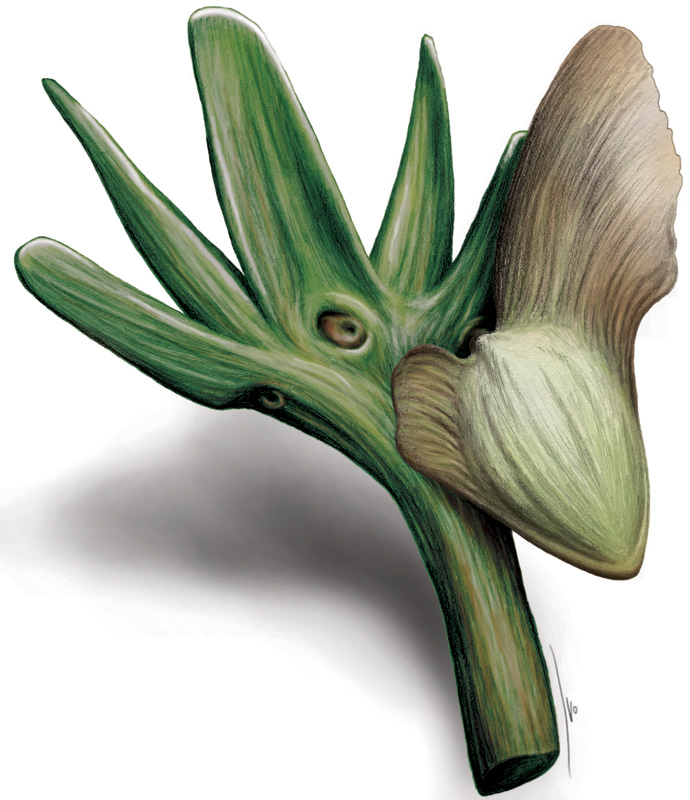It's that time of year when evergreen trees become apparent. The most obvious are the conifers. These trees hold steady while everything else seems to be in a mad rush for winter. Despite the term "evergreen" the conifers are nonetheless preparing for winter as well, though on a much more subtle level. Anyone paying close attention will see some color changes happening to them too. Despite the designation as "evergreen" conifers do shed leaves.
Timescales are everything for us humans. We tend to notice things that happen relatively fast, like an entire forest turning color in only a few weeks. The conifers have adopted a strategy that isn't as in tune with our perception. Conifers, for the most part, specialize in harsh habitats. Excelling in poor soils and extreme cold, they tend to invest in the long term. Needles are one such adaptation. Their minimal surface area and structural integrity make up for their costly production in nutrient poor conditions. When a conifer produces needles, they need to last for a while.
And that is exactly what they do. The average conifer needle has a lifetime of roughly 2 years (with some exceptions of course). It doesn't make sense for them to bank on a whole new set leaves every year. Because of the way they grow, conifers usually shed their leaves from the inside out. New leaves are produced at the tips of branches and, as older leaves get shaded out, conifers cut their losses and drop them. If you take a close look at conifers during the fall, this pattern becomes readily apparent.
Leaf drop doesn't always happen quickly either. They are often spaced out over time. One of the reasons I like plants so much is that they operate on vastly different timescales than we do. As you become more and more familiar with different species, plants can teach you to start looking at things a bit different than you are used to. Get outside and find some needle dropping conifers of your own.
Further Reading: [1]
The Evolution of a Helicopter
Stevenson, Robert A., Dennis Evangelista, and Cindy V. Looy. "When conifers took flight: a biomechanical evaluation of an imperfect evolutionary takeoff." Paleobiology 41.2 (2015): 205-225. [SOURCE]
The whirring helicopter seeds of modern day conifers (as well as a handful of other tree species) are truly marvels of evolution. We humans have yet to top the simple efficiency of this form of locomotion. It is easy to see how such seed anatomy benefits a tree. Instead of plummeting to the ground and struggling under the shade of its parents, winged seeds are often carried great distances by the breeze. Such a dispersal mechanism is so effective that multiple tree lineages have converged on a single asymmetrical wing design of their samaras.
The key to this type of seed dispersal lies in the movement of the seed in the air. The whirring motion allows the seeds to stay airborne as they are carried away from their cones. It would be all too easy to argue that any intermediate must be doomed to failure. However, this is not the case. A rich collection of 270 million year old fossils discovered in Texas is shining light on how at least one lineage of conifers settled in on this wonderful adaptation for seed dispersal.
Instead of producing one type of winged seed, an ancient species of conifer known scientifically as Manifera talaris produced multiple different samara designs. Some were symmetrical, others were double winged, and still others matched what we would readily recognize as a samara today. It would seem that early conifers were “trying out” many different forms of wind dispersed seed designs. Manifera talaris was alive during the early Permian. At that time, there were not many animals alive (that we are aware of) that could function as seed dispersers for conifers. Instead, these early trees relied on the wind to do the work for them.
Though these fossils offer a unique window into the evolution of winged seeds, they do not give any indication as to how each seed designs would have performed. For paleobotanist Dr. Cindy Looy, this meant a chance to have a little fun with science. She and her colleagues built functional paper models of each of the samara types represented in the fossils. By attaching the paper wings to comparably sized seeds from an extant conifer, she was able to test the flight performance of each of these samara types. What she found was quite interesting.
As it turns out, symmetric and asymmetric double-winged seeds performed quite poorly. They fluttered to the ground, barely achieving any rotation. Contrast this with the asymmetric single-winged seeds, which stayed airborne for twice as long as any other samara design. What this research shows is that early conifers were, in a sense, "experimenting" with different samara designs. Those designs that allowed for greater seed dispersal produced more trees that did the same.
Photo Credit: Dr. Cindy Looy
Further Reading: [1]

![Stevenson, Robert A., Dennis Evangelista, and Cindy V. Looy. "When conifers took flight: a biomechanical evaluation of an imperfect evolutionary takeoff." Paleobiology 41.2 (2015): 205-225. [SOURCE]](https://images.squarespace-cdn.com/content/v1/544591e6e4b0135285aeb5b6/1437657301019-XB4EC6SKTUVRMO77C7XN/image.jpg)
